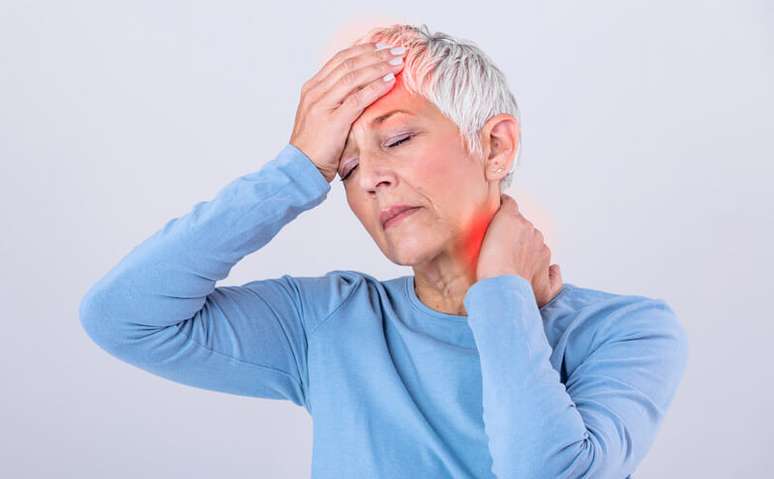Because it’s an invisible disease, pain ends up being the target of a lot of false information. Meet some of them
No one likes to feel pain, but everyone experiences it. Depending on its characteristics, the pain can become chronic. When this happens, it ends up being given the nickname of an invisible disease, because it makes itself felt, but is rarely identified.
Because of this difficulty in demonstrating it, chronic pain sufferers are often the target of disbelief, not only by those close to them, but also by healthcare professionals. After all, the logic applies: what cannot be seen does not exist. For this reason, the study of chronic pain ends up being relegated to the background, which makes the topic shrouded in many mysteries.
Due to life circumstances, Dr. Amelie Falconi went in the opposite direction of most doctors and decided to delve into pain studies. You specialized in pain at the Faculty of Santa Casa Hospital, in São Paulo, and founded the Committee for Integrative Medicine and Chronic Pain of the Brazilian Society for the Study of Pain (SBED). Today he is an interventional pain doctor and works on several fronts to resolve doubts on the subject.
Because it is Amelie herself who demystifies common thoughts about pain. See the top 5.
1. Exercise makes joint wear worse
Amelie says that, when done properly and supervised, exercise generally doesn’t make joint wear and tear worse.
“Instead, the practice benefits joint health, including preventing or delaying joint wear and tear, also called osteoarthritis,” she says.
According to her, exercise can play an important role in the prevention and management of osteoarthritis, as it helps strengthen the muscles that support the joints; involves movement, which can help maintain joint flexibility; acts on weight control, which, in excess, overloads the load-bearing joints, such as the knees; and improves blood circulation to the joints, which can help deliver essential nutrients to cartilage and other joint structures.
two. Rest improves pain
Amelie says rest can be helpful in some acute cases of pain, such as after an ankle sprain, and for a limited time. However, she makes one reservation that, in many cases of chronic pain, prolonged rest tends to make the condition worse.
“That’s because it ends up leading to physical deconditioning, loss of muscle strength, decreased flexibility, and even increased sensitivity to pain,” she says.
On the other hand, regular physical activity manages to minimize all the points described above. According to her, great attention should be paid to the type and intensity of physical exercise, as these must be individualized and adapted to the health conditions and limitations of the patient with chronic pain.
“Therefore, it is essential to consult a qualified healthcare professional to develop an appropriate and safe exercise plan, taking into account the cause of the pain, the patient’s general health and other relevant factors,” she says.
3. Imaging tests show the cause and intensity of the pain
The answer is no. According to Amelie, usually imaging tests such as X-rays, MRIs, and CT scans are unable to show the intensity of the pain.
The pain interventional physician explains that imaging tests are primarily intended to identify changes in body structures that may be related to medical conditions that cause pain. Therefore, imaging tests can help identify the underlying cause of the pain, assess the severity and extent of the condition, and help shape a treatment plan, but they cannot measure the intensity of the pain.
“Pain is a subjective and individual experience, the intensity of which varies from person to person,” he says.
To evaluate the intensity, according to the pain interventionist, the patient’s report on his experience of pain is mainly used, which is collected through subjective tools, such as the Numerical Pain Scale and the Visual Analog Scale.
4. The child feels no pain
When the doctor evaluates the intensity of pain, according to the aforementioned scales, he underlines the importance of the patient clearly communicating his painful experience, describing its location, quality, duration and intensity. Because infants and toddlers are unable to express their feelings verbally, it is very common to think that they are unable to feel pain. That assumption couldn’t be more wrong.
“Pain is an unpleasant sensory and emotional experience that can be had by people of all ages, including children,” says Amelie.
According to the doctor, infants and young children often express pain by crying, becoming restless, squirming, avoiding specific touches or movements, or through changes in behavior or mood.
“Therefore, it is important for parents, caregivers, and caregivers to be aware of any signs and symptoms of pain in children, in order to provide appropriate care and comfort,” she says.
Always bearing in mind that a child’s experience of pain can be different from that of an adult, due to differences in the development and maturation of the nervous system, as well as cultural and individual differences.
5. Old age is synonymous with pain
“Aging is a natural and inevitable process that affects the body in many ways and pain can be one of the manifestations of this process. Several health conditions associated with aging contribute to the sensation of pain and factors such as decreased muscle mass, loss of bone density and decreased flexibility,” comments Amelie.
According to the pain interventionist, although pain may be common in older people, that does not mean that it is inherent in aging, i.e., that it can be avoided or mitigated in a variety of ways.
“There are many treatment options available to help manage pain in older people, including medications, physical therapies, non-pharmacological approaches and lifestyle modifications,” he concludes.
HOMEWORK inspires transformation in the world of work, in business, in society. Created by COMPASSO, a content and connection agency.
Source: Terra
Ben Stock is a lifestyle journalist and author at Gossipify. He writes about topics such as health, wellness, travel, food and home decor. He provides practical advice and inspiration to improve well-being, keeps readers up to date with latest lifestyle news and trends, known for his engaging writing style, in-depth analysis and unique perspectives.









